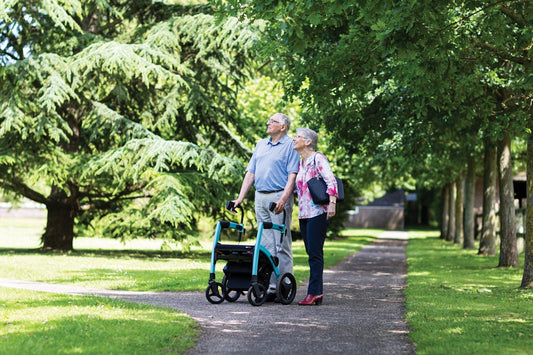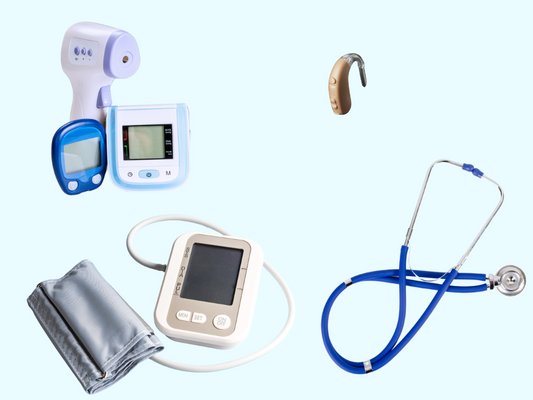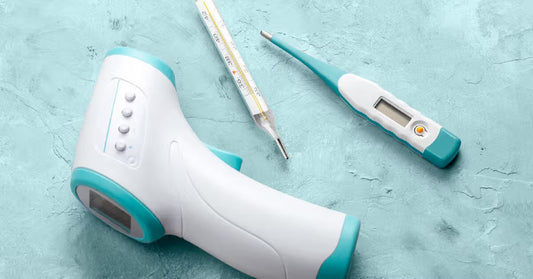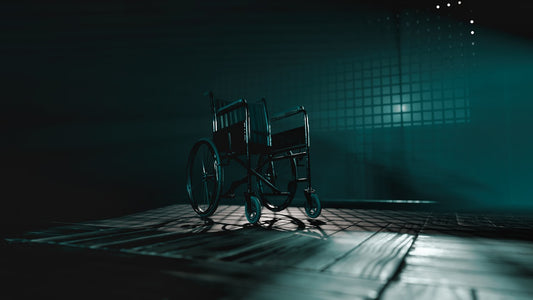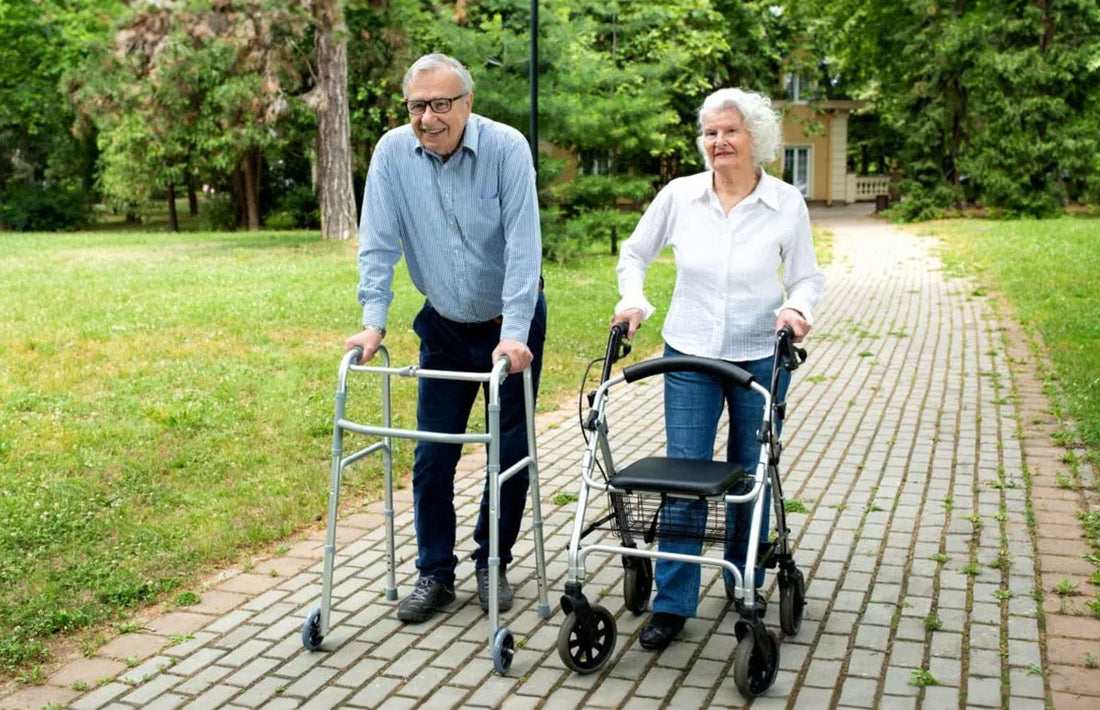
The Ultimate Guide to Rollator Walkers and Crutches
When it comes to staying mobile and independent, age is just a number. Mobility aids like walkers and rollators are valuable tools that empower individuals to move around with ease and safety. These aids are not just for the elderly; they offer a helping hand to anyone facing mobility challenges. In this comprehensive guide, we’ll delve into the rollator walkers and crutches, exploring how they can enhance your mobility and overall quality of life. We have also added their benefits and considerations before you buy Rollator Walker Canada.
What are Rollator Walkers?
Rollator walkers are mobility aids that provide extra support while walking. You can use a rollator walker whether you’re strolling through a park or navigating your way around the house, and it can make your life a whole lot easier.
A rollator usually has four wheels, a comfortable seat, handgrips, and brakes. This combination of features allows you not only to walk but also to take a rest when needed. Rollators often come equipped with a storage basket beneath the seat.
The Benefits of Rollator Walkers:
Recognizing the need for a walker isn’t always straightforward, but there are clear signs that it might be the right choice. A walker could significantly improve your mobility and confidence if you find it difficult to put weight on your legs, tire quickly, or struggle with balance.
Rollator walkers offer several advantages for people who might struggle with walking:
- More effortless Movement: These walkers have four wheels, so you can move around much more quickly compared to regular walkers, which you have to pick up with every step.
- Better Balance: Rollators are built with a wider base and comfy handle so that you can feel more stable and secure. This can really help you avoid accidents and falls.
- Just Right for You: Most rollators can be adjusted to fit your height perfectly. No one-size-fits-all here – it’s all about your comfort.
- Stay in Control: Rollators usually have brakes you can use with your hands. So, if you need to slow down or stop, you’re in the driver’s seat. And there are locks too, which help when you want to sit or stay still.
- Take a Load Off: One of the best things is that lots of rollators come with a built-in seat. When you’re feeling tired, you can just sit down and catch your breath. No need to worry about finding a place to sit.
- Carry Your Stuff: You’ll often find handy storage spots on rollators – baskets, pouches, or compartments – where you can carry your things. It’s like having a personal tote bag on wheels.
- Go Anywhere: Rollators are like all-terrain vehicles. You can use them indoors and outdoors, on smooth floors or bumpy paths. They’re up for the challenge!
- More Freedom: By providing support, rollators give you the freedom to move around on your own terms.
What are Crutches?
Crutches are another helpful tool for those who need assistance with walking. They’re long sticks that you hold under your arms to take the weight off an injured leg or foot. Crutches for sale come in different styles, but they are most generally used to provide support and help you maintain balance as you move.
The Benefits of Crutches:
- Getting Around Easier: Crutches are like those handy helpers that make moving around possible when your legs aren’t cooperating. Whether you have a leg injury or a chronic condition like arthritis, crutches give you the help you need.
- Lightening the Load: When you’re using crutches, your weight isn’t all pushing down on your hurt leg. Instead, it’s spread out between your arms and your other leg. That’s like giving your hurt leg a little break and helping it heal up.
- Not Falling Over: Crutches give you an extra leg, sort of. This means you’re less likely to wobble or tip over, which is a huge plus when your regular legs are having a tough time.
- Avoiding More Trouble: Using crutches can keep you from making your injury worse. It’s like telling your body, “Hey, let’s not put too much pressure on that sore spot.”
- Less Pain, More Gain: When you’re hurting or had surgery on your knee or ankle or something, moving can be a pain. Crutches can ease that pain by giving your sore leg a break and not squishing it too much.
Rollator Walkers Vs. Crutches
Selecting between a rollator walker and crutches relies on several factors, including your ability to move, comfort, stability, and any possible health issues. We have some points and differences to think about for each choice:
- Stability: Rollators tend to be steadier than crutches. They have four wheels and often include brakes, a seat, and a backrest, providing better balance and support. While crutches can be more physically demanding, especially for longer periods. They require muscular upper body strength.
- Weight Distribution: Rollators allow you to spread your weight across all four wheels, making them suitable for people who can partly put weight on both legs.
On the other hand, Crutches need more strength and coordination in the upper body. They are often used when one leg is hurt and can’t support weight.
- Comfort: Rollators usually come with padded seats and backrests, letting you take breaks when needed. They’re more comfortable for longer walks. Crutches can be set to fit your height and arm length, ensuring they’re the right size for you.
- Storage and Moving: Some rollators can be folded, making them simpler to store and transport, particularly if you need to travel with your mobility aid. Crutches are sticks and can be stored easily.
- Indoor and Outdoor Use: Rollators work well indoors and outdoors, as they are designed to move on various surfaces. Crutches offer a wider range of movement, making them good for getting around tight spaces or places where rollators might be too big.
- Conditions: Rollators are good for people who have limited movement due to conditions like arthritis, balance problems, or recovering from surgery. Crutches are commonly used by people recovering from leg injuries, surgeries, or fractures.
Conditions: Things to Think About
- Medical Advice: Talk to your healthcare provider or physical therapist before deciding. According to your particular needs and circumstances, they can give you personalized advice.
- Mobility Goals: Consider your daily activities and what you want to achieve with your mobility aid. If you need more stability and comfort for longer walks, a rollator might be better. If you prioritize being able to move easily, crutches could be a better choice.
- Strength and Coordination: Assess how strong your upper body is and how well you can coordinate movements. Crutches need more upper body strength, while rollators need less physical effort.
- Usage Length: Consider whether you need the mobility aid temporarily or for a long time. This can affect your decision.
- Surfaces: Think about where you’ll use the mobility aid the most. Rollators are better for uneven outdoor surfaces, while crutches are more versatile indoors.
Final Words:
In the end, the best choice depends on your personal needs and situation. Talking to a medical professional and trying out both options, if possible, can help you make a well-informed decision that suits you. Ultimately, both options contribute to greater mobility, showcasing that age and challenges need not hinder the pursuit of an active and fulfilling lifestyle.
